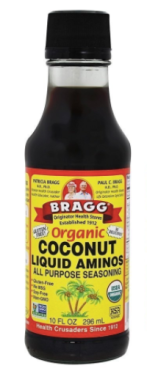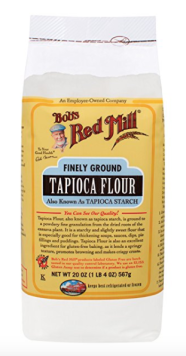Your paleo ingredient questions answered!
A quick follow up – a few of you have reached out to ask about certain ingredients I use, and I wanted to share my favorite staples I use when cooking. Most everything is available through the links to Amazon I’ve included below – I highly recommend purchasing them as alternatives to what’s in your local grocery store. (Plus, if you purchase through these links… I may get a perk! :))
Try these items out one at a time if you’re new to substituting a healthier alternative… if you’re brave, buy them all at once. Have fun!
Coconut Aminos

Soy sauce is often derived from wheat – this can be problematic if you’re gluten intolerant, or strict paleo. Coconut aminos is made of aged coconut sap and sea salt, and has considerably less sodium (90mg sodium while a teaspoon of soy sauce contains about 307mg… pretty good!). It’s naturally gluten-free and vegan, so it’s an easy staple for Asian dishes or anything needing a good briney flavor that falls within the Paleo realm. You can find it here.
Zoodles

Zucchini noodles are pretty simple – spiralized zucchini made into noodle shape. Another really versatile alternative to pasta, zucchini is gluten free, grain free and egg free, because, well… it’s a vegetable. Zucchini tends to completely absorb whatever seasoning you’re putting in your dish, so you don’t need to worry about competing flavor. They don’t require extensive cook time because zucchinis are not inherently firm or tough veggies… a win/win! Considering zucchini is relatively inexpensive, a spiralizer is a worthy investment to make in your kitchen. You can get it here!
Paleo Mayo

If you’ve ever thought about what’s in normal mayo, there’s a lot of unappealing stuff like soybean oil, sugar from god knows what, calcium disodium, or sunflower oil. You could either make your own (recipe here!), or buy a few of my favorites, such as NuCo Coconut Mayo or Coconaise. (buy the two and get free shipping!)
Ghee

Ghee is prepared by simmering butter (which is churned from cream) until it separates. Impurities are skimmed from the surface, leaving behind the clear remaining fat without any solids. The taste of ghee depends on the quality of the butter used, so I definitely don’t skimp on this. A little goes a long way. While ghee is inherently dairy, it lacks the polyunsaturated fats when reduced and clarified, making it a beneficial (but still optional) part of a Paleo diet. I like Ancient Organics, available here. (Don’t worry – this will last you a looonnggg time!)
Coconut Milk/Cream

Honestly, I thought I hated coconut. In theory, I’ve always loved coconut — it smells tropical and beachy, is the all-around team player of the fruit world (it does it all) … I even have a teddy bear from when I was 2 years old with fur similar to shredded coconut, aptly named “Coconut”. I just don’t enjoy the coconut flavor in everything I eat, which is why I prefer this brand (it’s really mild). You can sub this for dairy, and if you play your cards right with your seasoning, you won’t even notice the coconut. Many of my recipes have it, both sweet and savory. You can get it here as a pack of 6, which I like (because I always need it on hand). If you’re looking to try a can first, you can find it at your local grocery store.
Healthy Oil Alternatives


There are so many great alternatives to the standard canola and vegetable oils, and there’s a lot of health benefits to using different oils. There’s a lot of science behind what “fat” to choose, because some are good, some are great, and some are just bad. Saturated fats are often found in dairy and red meats — all “saturated” means is that the carbon atom of a fat molecule is inundated with hydrogen ions. Is it bad? well… too much can lead to heart disease, but moderation is key. Unsaturated fats are derived from veggies, nuts, seeds, and fish. Unsaturated, just like above, means there’s fewer hydrogen atoms surrounding the fat molecule. A few things that I like to use are saturated fats like palm oil, ghee and coconut oil, as well as unsaturated fats like avocado oil, safflower oil and olive oil.
Arrowroot Powder and Tapioca Flour


Like any aggressive eater, I love sauce. I love gravy. I love saucy gravy covering my food, all of it. Thanksgiving is my holy grail, where I can pour gravy over my entire plate, multiple times, without judgment (or adherence to my normal eating habits). Depending on the dish, I use arrowroot powder or tapioca starch as alternatives to flour or corn starch. I find that I like the consistency of tapioca starch more with broths, and arrowroot powder tends to turn out better with things that are fruit based. Experiment with each, and see what you like! Find my favorite brand, Bob’s Red Mill, which has arrowroot powder (here) and tapioca flour (here).
Keep an eye out for more recipes! In the meantime, follow me on instagram at @thedivinekitchen 🙂

